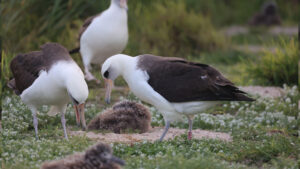A massive volcanic eruption has devastated the center of La Palma, the westernmost of Spain’s Canary Islands.
The first explosion took place at 3:30 pm local time today. Since then, lava and pyroclastic flows have turned the central part of the island into an inferno.
Lava at 1,075ºC has oozed down the western flank of the island, burning fields, forests, and houses on its way to the sea. So far, between 5,000 and 10,000 people are being evacuated.
The alarm first sounded last week, when an earthquake swarm (thousands of micro-seismic events) registered in the central part of the island. A dormant volcano known as Cumbre Vieja (Old Summit) lies directly below.
Yesterday, stronger surface quakes led authorities to begin evacuations. This afternoon, a great explosion startled residents. The first crater opened in an unpopulated area known as Las Manchas. Eight other new craters quickly formed.
The violence of the multiple Strombolian eruptions has far exceeded expectations. Overnight, huge spouts of fire lit the island. A loud roar, which some have compared to a jet about to take off, is continuous.
La Isla Bonita
This Hawaiian-like island features several mostly dormant volcanoes. The island’s highest point is 2,426m. Its thick forests, some of the cleanest air on earth, and severely steep trails have made La Palma a hikers and trail runners’ mecca. La Palma’s most famous ultramarathon, which covers over 73km and 4,400m in elevation, is called Transvulcania. Little wonder that it was known as La Isla Bonita long before Madonna wrote a song with the same title.
Like all the Canary Islands, La Palma is an active volcanic area. Mount Teide on Tenerife is the highest point on Spanish territory, at 3,715m. The Canarys’ most recent volcanic episode took place at sea, near little El Hierro Island, in 2011.
La Palma’s own last eruption occurred 50 years ago, when the Teneguia volcano went active at the southern tip of the island. By the time the material solidified, the volcano had grown by two million square metres.
It is unclear how long this current eruption will last. It could be days, weeks, or months. The 1971 Teneguia eruption ran from October to December. “Right now, it is completely unpredictable,” experts told Spanish media.






